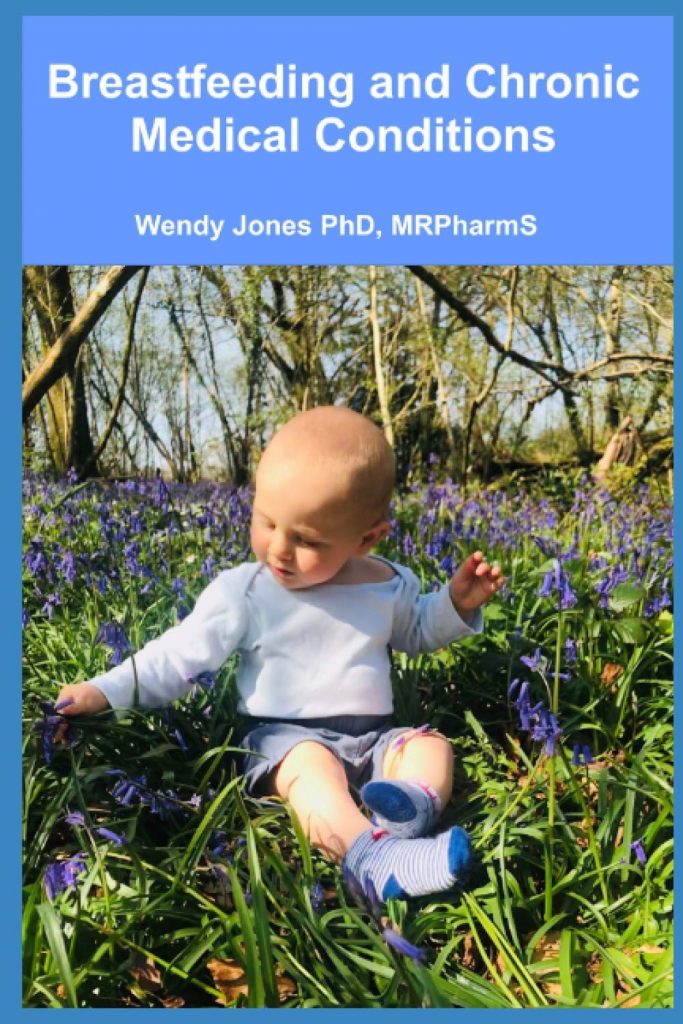Eczema is hard to deal with: the constant itching, soreness, appearance is tough. Breastfeeding can help to prevent eczema but is not a total preventative as my daughter keeps telling me!
Wang J, Ramette A, Jurca M, Goutaki M, Beardsmore CS, Kuehni CE. Association between breastfeeding and eczema during childhood and adolescence: A cohort study. PLoS One. 2017 Sep 25;12(9):e0185066.
Lodge, C., Tan, D., Lau, M., Dai, X., Tham, R., Lowe, A., Bowatte, G., Allen, K. and Dharmage, S. (2015), Breastfeeding and asthma and allergies: a systematic review and meta-analysis. Acta Paediatr, 104: 38-53.
Hicks SD, Beheshti R, Chandran D, Warren K, Confair A. Infant consumption of microRNA miR-375 in human milk lipids is associated with protection from atopy. Am J Clin Nutr. 2022 Dec 19;116(6):1654-1662.
Factsheet pdf is available :
https://breastfeeding-and-medication.co.uk/wp-content/uploads/2023/01/eczema-and-breastfeeding.pdf
The information is taking from Breastfeeding and Chronic Medical Conditions (available on Amazon)

“I was attending dermatology weekly for months with a new-born. Full body bandage clothing with nipple holes cut out so that my topical treatments would not affect my son. I actually think they did very slightly. He ended up getting a few facial spots at weeks old that have never gone away, he is almost 4. I had to weight up a lot of risk/benefits My condition is reasonably under control, but it has taken 31 years to get here.“
“I have had chronic severe eczema since I was a baby. About a few months after having my son, I had a flare up on my breasts that would not go away no matter what I tried. It made breastfeeding so uncomfortable. Imagine having the itchiest rash imaginable and then nursing a baby on that wound. I battled with being raw, skin being so dry that it cracked around my nipples etc. I fought through it. It made it really hard to nurse when we were in public or around other people because people stare, and my poor breasts were bright red and inflamed constantly. Breastfeeding was my number one goal of early motherhood and I was not going to let pain get in the way. We are happily nursing still at 18 months postpartum.“
Description
Eczema often develops for the first time during the first year of life even with exclusive breastfeeding. About 2 in 3 children with atopic eczema grow out of it by their mid-teens. The skin becomes itchy, dry, and sore. It may also lead to cracking of the skin. It most often appears in the folds of the elbows and knees but also on the face, back and scalp. It often runs in families and may precede other atopic conditions such as asthma. There is no cure, but treatment can usually control or ease symptoms. Approximately one in 30 adults has eczema.
Some breastfeeding mothers find that they are allergic so some brands of breast pads or find that their breasts have more eczema than normal. Using an extra rinse cycle can help with modern washing machines which use less water.
Treatment: Emollients and topical steroids are compatible with breastfeeding. If applying to the breast apply after feeds and rub well in so that baby does not rub the product into eyes.
Emollient, moisturising creams: everyone reacts differently to emollients and it may be necessary to try several brands to find the one that helps. Lotions, creams, gels, ointments, and sprays are available. Some can be used as soap substitutes.
Topical steroids used to reduce itching and dryness in an area which has flared. Application of too much or too frequently may thin the skin and produce damage.
Identification of triggers can be useful – common ones include laundry conditioner, animal fur, shower products or soaps
Trying not to scratch will reduce severity but can be VERY difficult. Avoiding bath/showers in too hot water helps some people.
Oral antihistamines may be useful. The non- sedating ones are preferred in breastfeeding.
Tacrolimus and Pimecrolimus
In severe eczema, which is unresponsive to topical steroids, topical tacrolimus ointment and pimecrolimus cream may be used. While the absolute transcutaneous bioavailability of tacrolimus is unknown, it is apparently very low. Combined with the poor oral bioavailability of this product, it is not likely a breastfed infant will receive enough following topical use (maternal) to produce adverse effects. No data are available on pimecrolimus transfer to human milk, but because the maternal plasma levels are so low, it is extremely remote that this agent would penetrate milk in clinically relevant amounts. (Hale)
References
Hale TW Medications and Mothers Milk online access
Further information
National Eczema Association https://nationaleczema.org/eczema/
British skin foundation https://www.britishskinfoundation.org.uk/eczema
